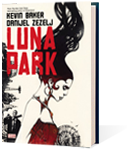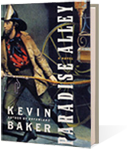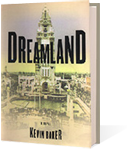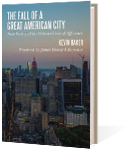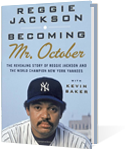By Kevin Baker
At the Harvard commencement on June 5, 1947, George C. Marshall delivered a fifteen-minute speech, in which he painted a grim picture of the continuing “hunger, poverty, desperation, and chaos” in a Europe still devastated by the Second World War. It was time, the secretary of state inveighed, to end the piecemeal aid the U.S. had been providing to the continent since 1945, in favor of a comprehensive recovery plan—but “…The initiative, I think, must come from Europe.”
To most of his audience in the Harvard Yard—and to The New York Times the next day—it sounded like little more than the usual graduation boilerplate. It was something more to Ernest Bevin, Britain’s wily foreign minister. He replied to Marshall’s “suggestion” almost at once, and by July 3, Bevin and his opposite number in France, George Bidault, had invited some 22 nations to Paris, to develop a “European Recovery Plan” (ERP).
Bevin was a man who knew how to seize an opportunity, but it helped that he had been tipped off by Dean Acheson, Marshall’s stiff-collared under secretary of state. Acheson was the point man for the old Eastern Establishment, a small group of businessmen, financiers, lawyers, and foreign policy analysts on the prep school-Ivy League-Washington nexus.
They had already done a masterful job of laying the groundwork for Marshall’s speech, pointing out how European cities still lay in rubble and ports were still blocked up. Farmers were hoarding food because they could not get a decent price for it. The Communist parties of France and Italy, directed from the Kremlin, were launching waves of strikes, trying to destabilize their nations’ shaky governments.
The Establishment now got to work on the Congress, running behind the considerable political interference of Marshall, Senator Arthur Vandenberg of Michigan, and President Harry Truman—who shrewdly insisted that the ERP be called “the Marshall Plan,” after the man he considered “the greatest living American.” The administration poured on the propaganda, and worked behind the scenes to turn the Europeans’ proposals from “16 laundry lists” into a single, realistic plan. Yet much of the reactionary Congress still saw the Marshall Plan as “Operation Rat Hole,” pouring money into a “bold socialist blueprint.”
In the end, the Soviet Union itself tipped the scales in favor of the Marshall Plan. The Soviets, and their Eastern European satellites, had been included in the initial U.S. offer of participation, but acceptance entailed too many risks for the Soviets. The U.S.S.R. would have had to either leave off looting the countries it had conquered and join the U.S. giving aid it could ill afford—or to beg aid, and submit to U.S. inspections and influence.
Both alternatives were unacceptable to Stalin. The Soviets refused to participate, and in February, 1948, they engineered a vicious coup in Prague that brought down Czechoslovakia’s coalition government.
That was enough. The ERP passed both houses on April 2, 1948, and on April 14 the freighter John H. Quick steamed out of Galveston Harbor, bound for Bordeaux with 9,000 tons of American wheat. Before long, some 150 ships were shuttling back and forth across the Atlantic, providing tons of food, fuel, industrial equipment, farming supplies, construction materials.
By 1952, the Marshall Plan had provided some $13 billion in aid to Europe, or roughly $73 billion in 1990 dollars. The initial expendtiure of $6.8 billion was 18 percent of the U.S. budget and 2.4 percent of America’s GNP in 1949. All told, between 1946 and 1955, U.S. aid to Western Europe’s economy amounted to $170 billion in today’s money.
Would Europe would have recovered anyway? Some 80-90 percent of the money appropriated under the ERP came from the Europeans themselves, and Western Europe was a region that already had a long industrial—and democratic—history. What it needed was time to retool, and to eat while it retooled—and that is exactly the Marshall Plan provided.
Was it self-interested? Would that all such national self-interest in world history had been so enlightened. The Marshall Plan provided European markets for American goods, but it also restored European nations as global competitors with the United States. By 1951, Western Europe’s industrial production was 43 percent above prewar levels, its farm production was 10 percent higher—and its democratic institutions were secure.
As Winston Churchill wrote, “Many nations have arrived at the summit of the world but none, before the United States, on this occasion, has chosen that moment of triumph, not for aggrandizement but for further self-sacrifice.”
American Greats Edited by Robert A. Wilson & Stanley Marcus
Public Affairs Press, a member of the Perseus Group

